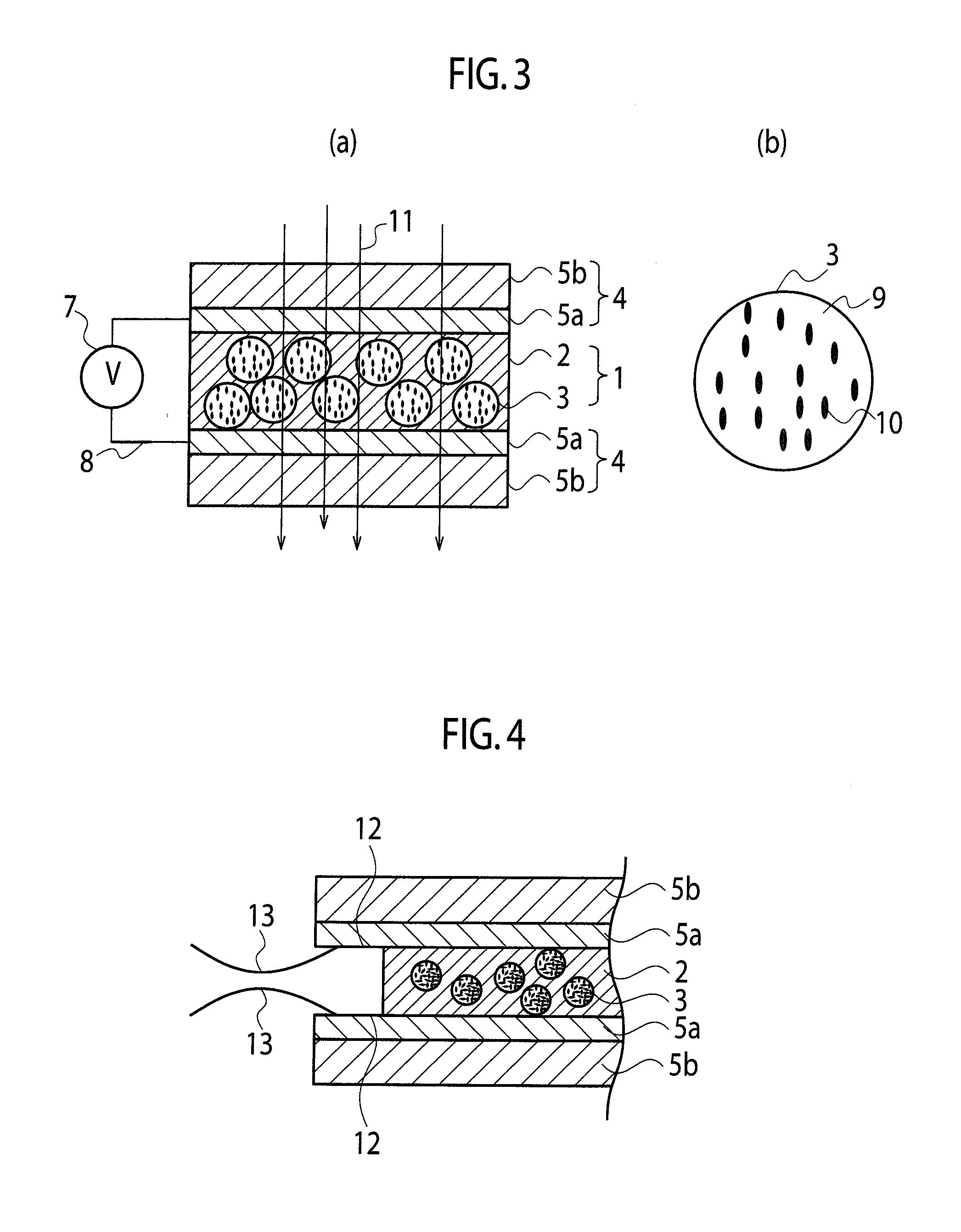Light control film
a technology of light control and film, applied in the field of light control film, can solve the problems of color phase change, change in optical density, and practical use, and achieve the effect of excellent radio wave transparency
- Summary
- Abstract
- Description
- Claims
- Application Information
AI Technical Summary
Benefits of technology
Problems solved by technology
Method used
Image
Examples
example 1
[0209]2.5 g of the light control suspension obtained in the (Preparation Example for light control suspension) was added to 10 g of the energy-beam-curable silicone resin obtained in the (Production Example for energy-beam-curable silicone resin), 0.2 g of bis(2,4,6-trimethylbenzoyl)phenylphosphine oxide (manufactured by Ciba Specialty Chemicals Corp.) as a photopolymerization initiator, and 0.3 g of dibutyltin dilaurate as a coloration preventing agent. The mixture was mechanically mixed for one minute, and thus a light control material was produced.
[0210]For the transparent conductive layer, polystyrenesulfonic acid-doped poly(3,4-ethylenedioxythiophene) (CLEVIOS S V3, manufactured by H.C. Starck GmbH, having a structural unit represented by polystyrenesulfonic acid (upper part of the above formula a), weight average molecular weight: 40,000, thiophene unit: 5- to 10-mer) as a conductive polymer, and pentaerythritol triacrylate (trade name: ARONIX M-305, manufactured by Toagosei C...
example 2
[0223]A light control film was produced in the same manner as in Example 1, except that the gap of the applicator at the time of applying the transparent conductive layer was set to 5 μm, and the light control film was evaluated in the same manner as in Example 1.
[0224]The surface resistivity of the transparent conductive layer was 1450Ω / □.
example 3
)
[0225]A light control film was produced in the same manner as in Example 1, except that the gap of the applicator at the time of applying the transparent conductive layer was set to 3 μm, and the light control film was evaluated in the same manner as in Example 1.
[0226]The surface resistivity of the transparent conductive layer was 1850Ω / □.
PUM
| Property | Measurement | Unit |
|---|---|---|
| radio wave shielding property | aaaaa | aaaaa |
| frequency | aaaaa | aaaaa |
| optical density | aaaaa | aaaaa |
Abstract
Description
Claims
Application Information
 Login to View More
Login to View More - R&D
- Intellectual Property
- Life Sciences
- Materials
- Tech Scout
- Unparalleled Data Quality
- Higher Quality Content
- 60% Fewer Hallucinations
Browse by: Latest US Patents, China's latest patents, Technical Efficacy Thesaurus, Application Domain, Technology Topic, Popular Technical Reports.
© 2025 PatSnap. All rights reserved.Legal|Privacy policy|Modern Slavery Act Transparency Statement|Sitemap|About US| Contact US: help@patsnap.com



